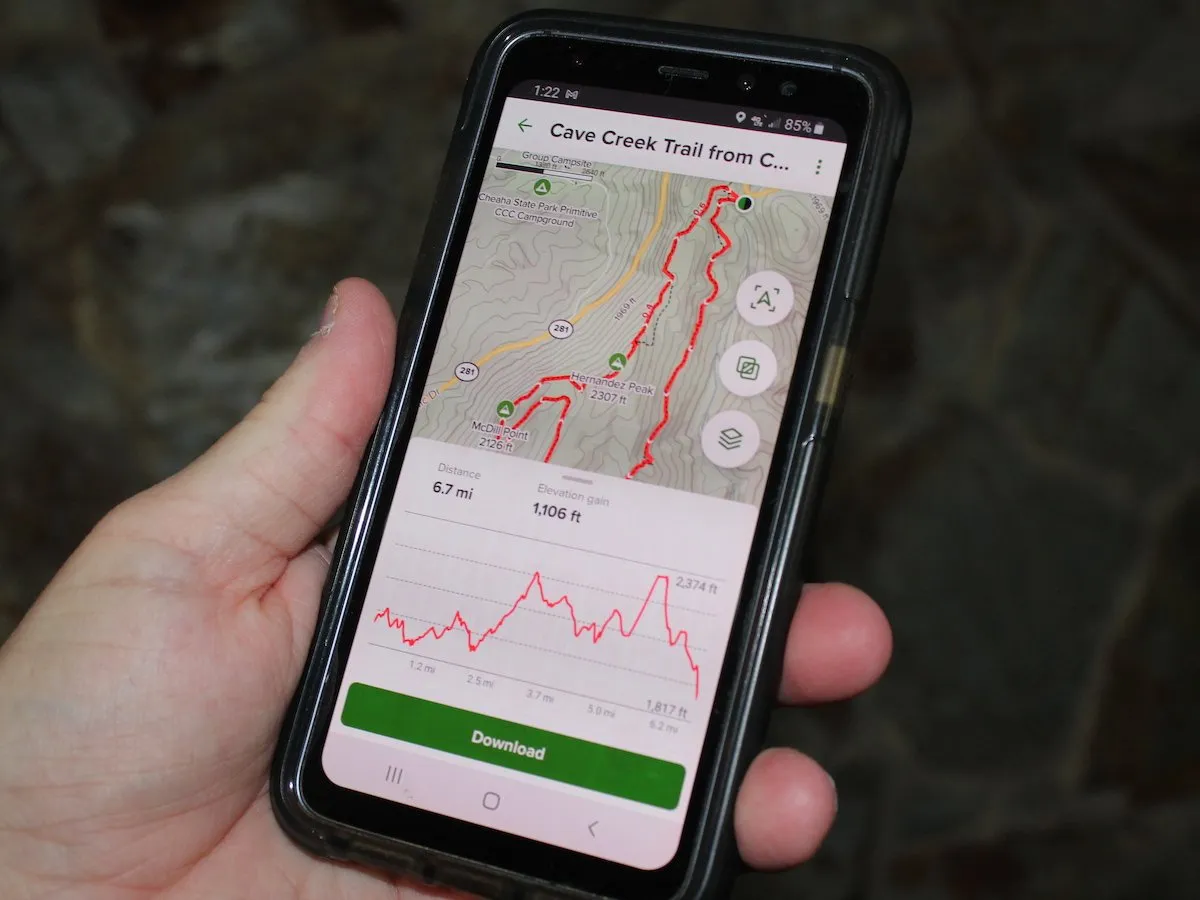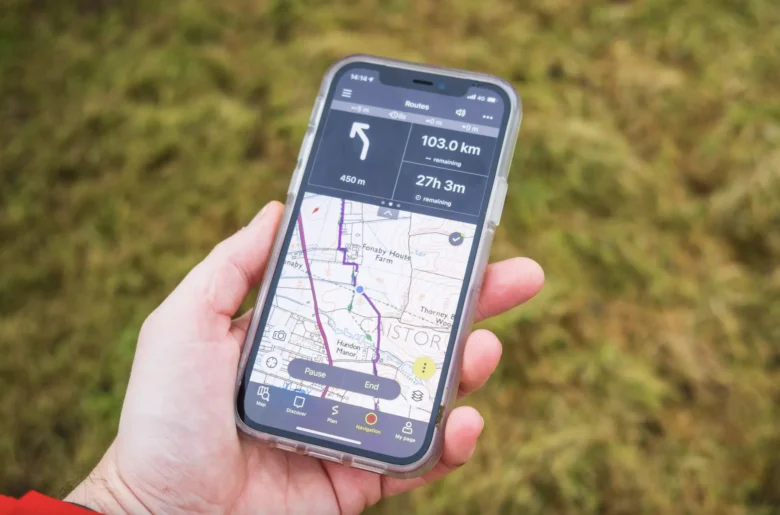In an age where technology seamlessly blends with nature, the quest for the perfect trail no longer starts with a map and compass, but with a tap on your smartphone. With a plethora of trail-finding apps available, outdoor enthusiasts can now discover hidden gems, scenic routes, and challenging trails with unprecedented ease.
Whether you’re a seasoned hiker, a weekend warrior, or someone looking to escape the urban jungle for a breath of fresh air, there’s an app to guide your journey.
This article delves into the world of trail-finding applications, highlighting how they can enhance your outdoor adventures, connect you with nature, and lead you to unforgettable experiences right at your doorstep. So lace up your hiking boots, charge your phone, and let’s explore the best apps to find trails near you.
Personalized Trail Recommendations

One of the most significant advantages of trail-finding apps is their ability to offer personalized recommendations based on your location, skill level, desired difficulty, and scenic preferences.
Whether you are looking for a leisurely nature walk or a challenging mountain hike, these apps can filter options to suit your needs.
Detailed Trail Information:
Gone are the days of vague trail descriptions and outdated maps. Modern trail apps provide comprehensive details, including trail length, elevation gain, terrain type, and estimated completion time. This information helps hikers prepare adequately for the journey ahead.
User Reviews and Photos:
What better way to gauge a trail than by reading experiences from fellow hikers? User-generated content like reviews, ratings, and photos offer a glimpse into what to expect, ensuring you pick a trail that aligns with your expectations.
Offline Access:
Many trail apps offer the ability to download maps and trail guides for offline use, a crucial feature for areas with limited or no cellular service. This ensures you stay on track even in the most remote locations.
Safety Features:
With features like GPS tracking, emergency alerts, and the ability to share your location with friends or family, these apps don’t just lead you to adventure; they also prioritize your safety.
Community and Social Interaction

Some apps foster a community of hikers, allowing users to share experiences, tips, and even organize group hikes. This social aspect adds an enriching dimension to your hiking experience.
Now, let’s highlight a few popular trail-finding apps that are widely recognized for their functionality and user-friendly interface:
AllTrails: Arguably the most popular app among hikers, AllTrails boasts an extensive database of trails. It allows users to filter searches, read reviews, and even record their hikes.
Komoot: Ideal for both hiking and biking, Komoot offers detailed topographic maps, turn-by-turn navigation, and the ability to plan multi-day trips.
Gaia GPS: Preferred by wilderness enthusiasts, Gaia GPS offers high-quality topographical maps and robust GPS features for off-the-grid adventures.
TrailLink: Powered by Rails-to-Trails Conservancy, TrailLink specializes in finding rail-trail options, perfect for those interested in flat, often paved, and accessible trails.
Hiking Project: This app is community-driven and offers detailed, up-to-date information and high-quality trail maps, making it a reliable companion for serious hikers.
Step-by-Step Guide to Downloading and Using Trail-Finding Apps
Embarking on your next outdoor adventure is easier than ever with the help of trail-finding apps. Here’s a simple guide on how to download and use these apps to enhance your hiking experience:
Step 1: Choose Your App
Based on the features you need, choose an app like AllTrails, Komoot, Gaia GPS, TrailLink, or Hiking Project. Consider factors like the type of trails you’re interested in, required navigation features, and whether you need offline access.
Step 2: Download the App
- Go to the App Store (for iOS devices) or Google Play Store (for Android devices).
- Search for the chosen app using the search bar.
- Select the app from the search results and tap ‘Install’ or ‘Get’.
Step 3: Create an Account
Once the app is installed, open it on your device.
Most apps will require you to create an account. You can usually sign up with an email address, or sometimes with your Google or Facebook account for convenience.
Follow the on-screen instructions to complete your profile.
Step 4: Set Up Your Preferences
After signing in, set up your preferences. This might include your fitness level, the types of trails you’re interested in (e.g., hiking, biking), and your preferred difficulty level.
Some apps may also ask for location access to provide trail recommendations near you.
Step 5: Search for Trails
Use the search function to find trails. You can often search by location, trail name, or keywords.
Utilize filters to narrow down the search results based on distance, difficulty, elevation gain, and user ratings.
Step 6: Explore Trail Details
Once you find a trail that interests you, tap on it to view detailed information. This typically includes the trail length, elevation profile, directions to the trailhead, user reviews, and photos.
Some apps also provide weather forecasts and trail conditions.
Step 7: Use Offline Features (if available)
If you’re venturing into areas with limited cell service, use the app’s offline feature. Download the trail map and any necessary guides to your device beforehand.
Ensure your phone’s GPS will work in offline mode (most modern smartphones have this capability).
Step 8: Track Your Hike
Many apps allow you to track your hike using GPS. Start the tracking feature when you begin your hike to monitor your progress, distance covered, and time spent.
Be aware of battery usage when using GPS tracking for extended periods.
Step 9: Engage with the Community
After your hike, consider leaving a review or uploading photos to help fellow hikers.
Engage with the app’s community features, if available, to share experiences or get tips for future hikes.
Step 10: Plan Your Next Adventure
Use the app to explore new trails and plan your future hiking adventures. You can often save favorite trails or create custom lists.
Conclusion
In conclusion, trail-finding apps are revolutionizing the way we explore the outdoors. They offer a mix of practicality, safety, and community, making them indispensable tools for any nature lover.
Whether you’re exploring local trails or embarking on a wilderness adventure, these apps ensure you’re well-informed, connected, and safe. So, download your favorite app, find your trail, and embrace the beauty of the great outdoors!




